
Edible perennial fruits, herbs, and vegetables are the gift that keeps on giving! Unlike annuals or biennials, which must be planted annually or every other year respectively, perennials will return yearly with only one initial planting. Some of these plants may even survive for decades in your garden—just imagine how convenient it is to have a seemingly endless supply of tasty produce at your fingertips!
Including grapes, apples, pears, and pawpaws, the list of edible perennial fruits seems endless, because most fruits are, in fact, perennials. However, there’s actually a pretty short list of perennial herbs and vegetables.
Perennial vegetables include artichoke, wild arugula, asparagus, some varietals of broccoli (like Nine Star), kale, radicchio, ramps, rhubarb, some spinach (like Ceylon), sorrel, sweet potato, tree collards, watercress, wasabi, and yams. Some of these are tender perennials, like broccoli and tree collards, but just look at your seed packets to find out. Cucamelons are one of my favorite tender perennials, too!
Unbeknownst to some, the crops that you treat as annuals can actually be transformed into perennials. For example, potatoes and even indeterminate tomatoes can be grown perennially depending on environmental factors. The reason why they’re often treated as annuals is that they are disease-prone, so crop rotation often comes into play once a disease settles into the soil.
As for herbs, edible perennial herbs are often tender perennials, meaning that they return only if you live in a warmer planting zone or have a very mild winter. But that’s not true of all herbs. In fact, my perennial herb garden is my absolute favorite garden of all!
Perennial herbs include some varietals of basil (like African Blue), chives, fennel, garlic, ginger, horseradish, lavender, lemon balm, mint, onions (like walking onions and shallots), oregano, parsley, rosemary, sage, and thyme.
In my experience, the hardiest of these herbs, which can survive harsh winters, are certainly chives, garlic, mint, onions, oregano, sage, and thyme. I’ve personally never gotten the others to resurface in any perennial fashion in my own garden in Zone 5.
More benefits of perennial vegetables
- Lazy gardening (sort of): With perennial vegetables, you can enjoy the low-maintenance benefits of not having to replant or till annually. Established plants are almost impervious to neglect, and they require reduced watering and weeding while being highly resistant to pests, diseases, and weeds. Not only that but their environmental impact is drastically decreased due to less maintenance input!
- Yield grows year to year: Planting perennial vegetables not only increases your harvest from year to year but also expands the season of growth! These crops are especially useful for providing produce during off-seasons when annuals cannot. Additionally, many perennials have edible leaves and flowers, making them even more beneficial. Some types of these plants are extremely prolific—in fact, you’ll discover that harvesting more means they will produce more!
- Improved soil: Growing perennial vegetables has a host of advantages for the soil, from preventing erosion to improving its fertility. Their deep root systems draw up essential nutrients that are then pumped into the topsoil, while also encouraging beneficial fungi and boosting organic matter content. Plus, there’s no need to till—meaning you can leave the natural microbiome of your earth undisturbed!
My 8 favorite perennials
Now that we’ve tackled the list of popular perennials, I’m going to walk through my favorites and tell you why I love them so much. I can’t talk about every perennial out there because we’d be here all day, but I will share about these eight that I adore the most.
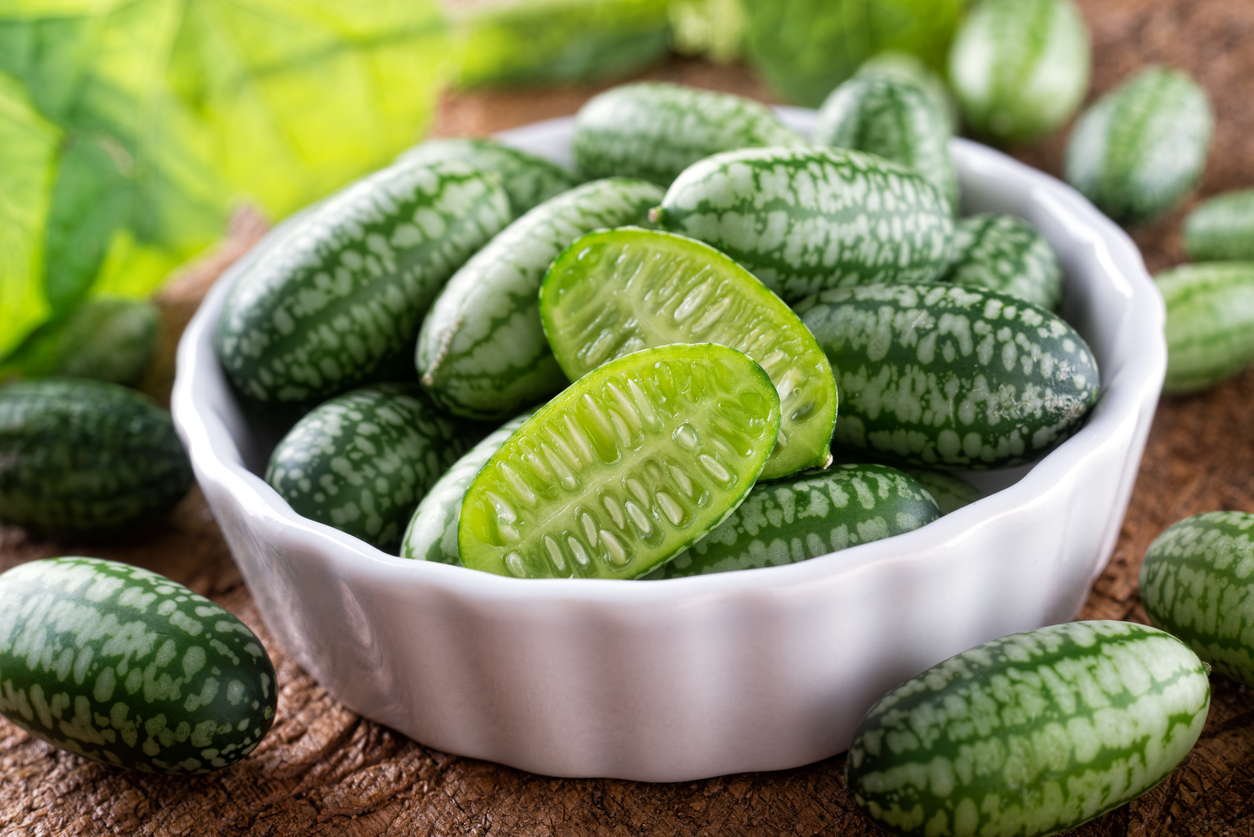
1. Cucamelons
Cucuamelons are tiny melon-looking cucumber-tasting fruits. As they mature, they also have a bit of a lime taste. They go great in salads or pickled, and if they grow, they will cover an entire arbor with one or two vines. Cucamelons are a tender perennial, but since they drop so much fruit, they will easily reseed and can pop up the following spring too. You can give them a better chance of returning if you mulch your beds over the winter. They’re fun for kids and are seriously disease resistant. They also have a ton of flowers so they bring all the pollinators to the yard!
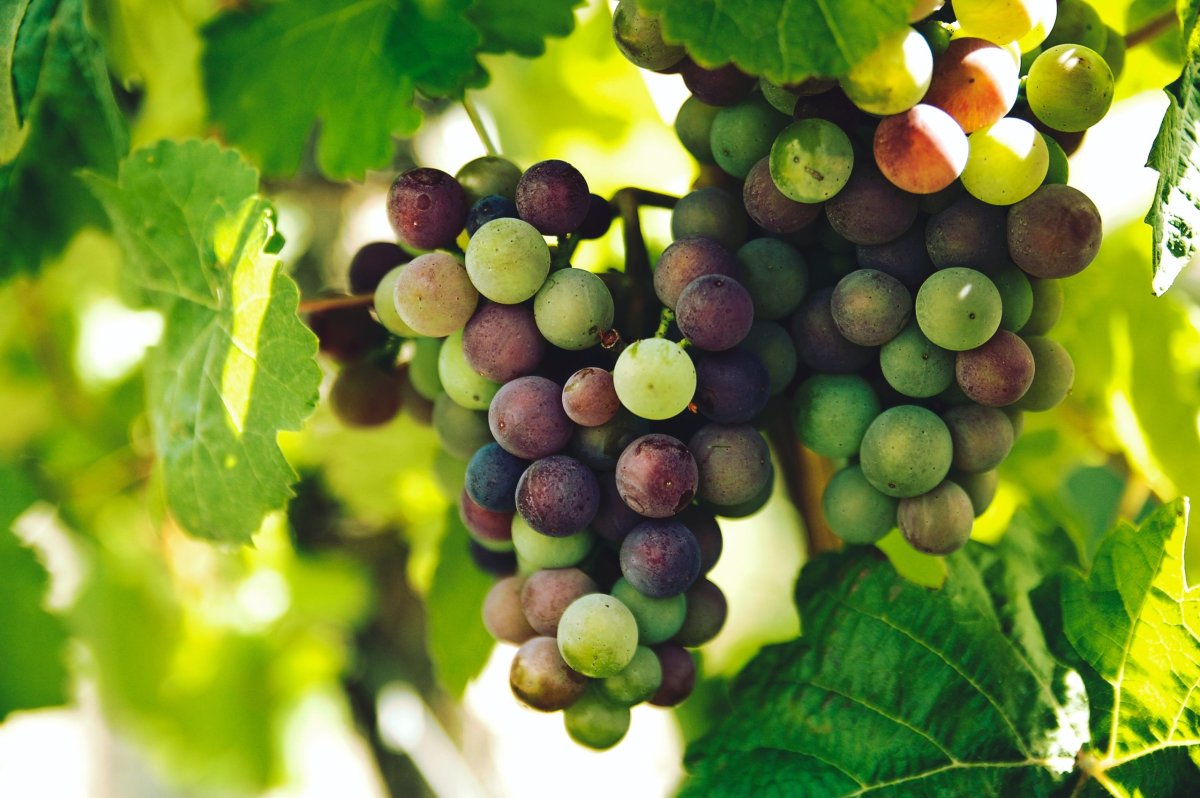
2. Grapes
Now, I was a bit resistant to growing grapes the first time around because they are prone to downy mildew and powdery mildew, my two least favorite diseases, and they tend to attract rodents. But being a lover of wine and grapes, I just couldn’t help myself. The most important thing you need to know about growing grapes is that they like long summers and rainy winters. They need to be planted 6 to 8 feet apart, and they love the sun. Your grapes will pop off of new shoots that grow, called canes, and the flowers are pollinated by the wind, bees, and bugs. They’ll happily vine up an arbor, trellis, or pergola if you only have a little bit of space, as long as the soil is rich, and the sun is out all day. Grapes will often pop off their first year if you plant bare root stock.
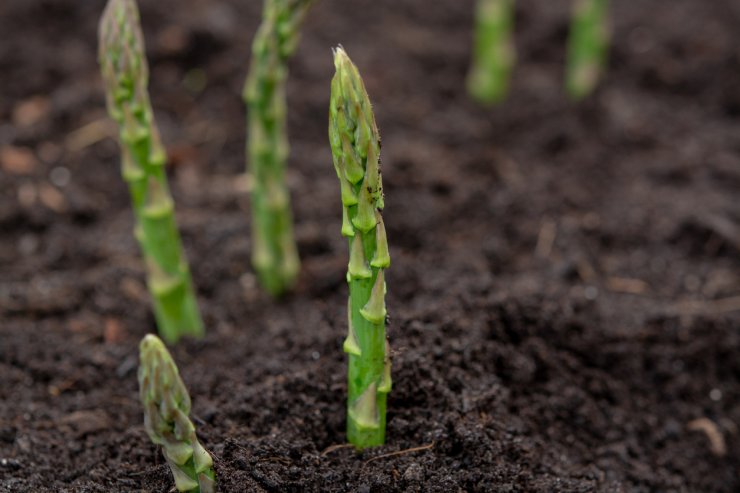
3. Asparagus
I’ll deep dive into asparagus here because I just landed on year four of my asparagus patch. I happen to live in an area that’s famous for having the best asparagus, which is shipped all over the world, so it was a no-brainer that I would decide to plant asparagus. The thing about asparagus is that it takes a few years to establish, so it requires patience. To grow your own patch, buy yourself some asparagus crowns. You’re going to end up with a pile of brown leggy alien-looking roots, and you’ll want to soak them in water for a few hours before you plant them.
Make sure you’re starting with a weed-free garden bed that you plan to keep that way. When three to four weeks remain before the last average frost date, it’s time to plant your asparagus crowns. Dig a hole in the ground for your plants. The hole should be 5 to 8 inches deep. If the soil is heavy, make it 5 inches deep. For very cold areas, make it 8 inches deep. Put the buds of the plant up and spread out its roots evenly in the hole. If you are planting green asparagus, space the plants 8 to 14 inches apart. For purple asparagus, make the space between plants 6 to 8 inches apart. The closer you plant them, the thinner the spears will be. When you are planting the spears, make sure there is at least 3 to 6 feet between each row. Put 2 to 3 inches of soil over the crowns. As they get taller, add more soil to the furrow.
You’ll likely get a lot of sprouts your first year, but don’t go chopping them down, or they won’t have the strength to grow back next year. Instead, let them grow out into furry little fronds all summer long. In the fall, they will drop berries and seeds. Do this again the next year, and even though the spears will look bigger and mighty delicious, let them grow out again. You can also plant more crowns in any spots that didn’t grow back. Finally, in year three, it’s time to harvest, and the rest is history; just make sure you keep the beds weed-free because asparagus doesn’t like to complete!
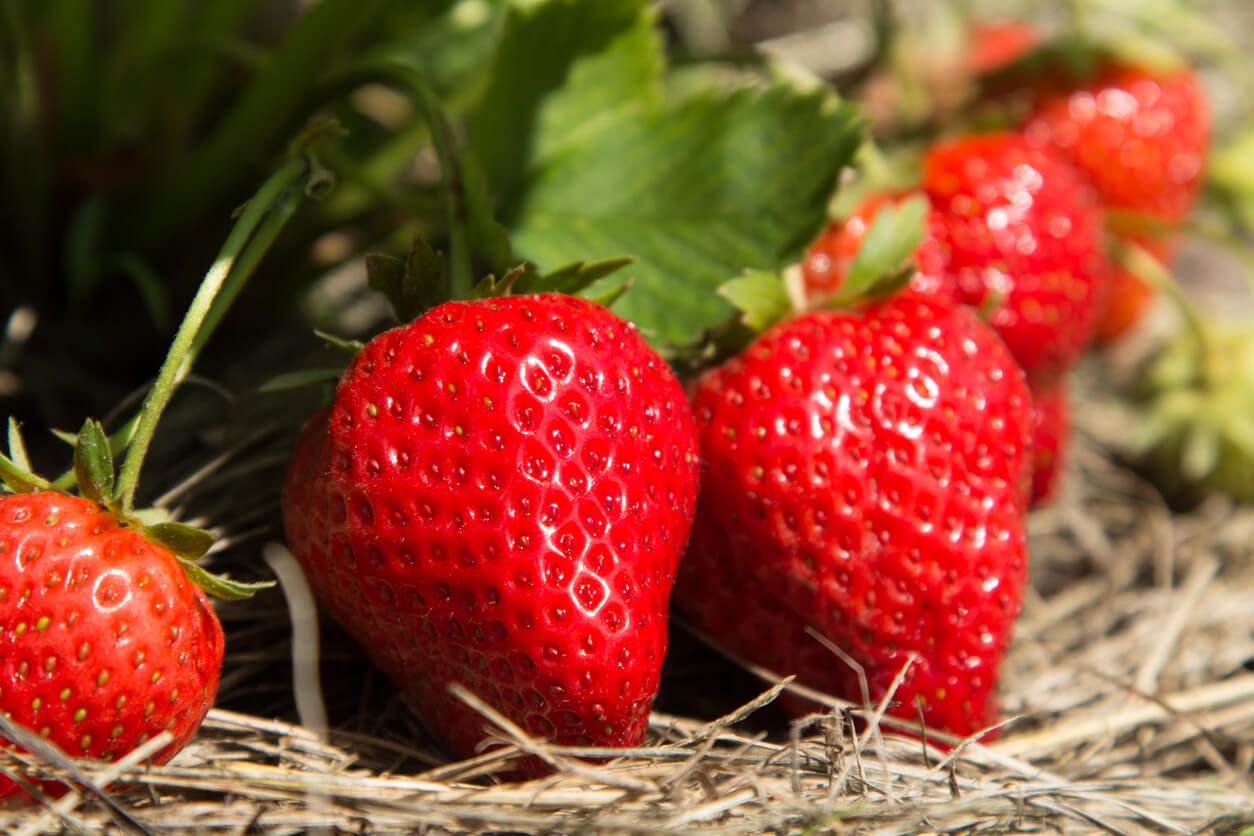
4. Strawberries
Strawberries aren’t the most prolific growers unless you have a ton of space, but they sure do grow easily. Every year I plant more strawberries, and my biggest suggestion is to use weed fabric, mulch with pine bark, or another material below your plants. Also, choose the everbearing varietals. That way, you will get strawberries all season long. If you buy bare-root strawberries, you’ll have berries in your very first season.

5. Blueberries
I just launched an entire orchard in my backyard with every fruit tree I could ever want, but until those get fruiting, my favorite fruity perennial is blueberries. My blueberry bushes are the gifts that keep giving! Why not blackberries or raspberries? Because as much as I love them, they’re terribly invasive, and I spent years of my life fighting them off at my prior home. Blueberries, on the other hand, are just so easy to grow, really do produce a healthy bounty, and only take a couple of years to establish.

6. Chives
As a child, my grandmother had a patch of chives, and my cousins and I would munch on them all day long. I knew my forever home would need to have chives as part of its edible perennial garden, and chives were the first to go in. Many years later, I can hardly keep them at bay, and I’m not mad about it at all!
In terms of creating a perennial herb garden, they grow great for me next to my lavender, sage, thyme, and oregano!
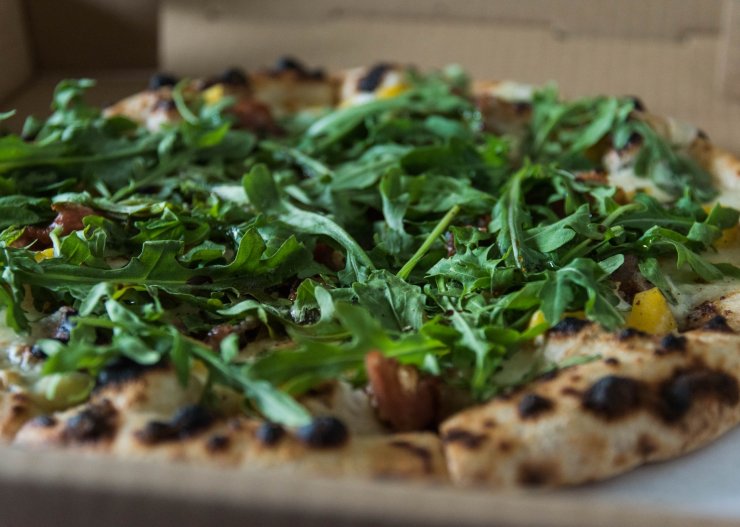
7. Arugula
Not every variety of arugula is perennial, and not every perennial is a hardy perennial, but wild perennial arugula, known by the more common name Sylvetta or Wild Rocket, can grow quite far north. It grows a little more slowly than other annual varieties, but it’s happy in most conditions, as long as you water it regularly and use it before it flowers and gets bitter. If it does flower, you can eat the flowers instead, or let it reseed so you have a larger arugula garden next year! When you harvest, cut leaves about an inch above the ground, so that it will regrow. It’s a little stronger in flavor than other arugula, but chefs love it. It’s delightful on pizza or mixed in with other greens for a fresh, slightly spicy salad.
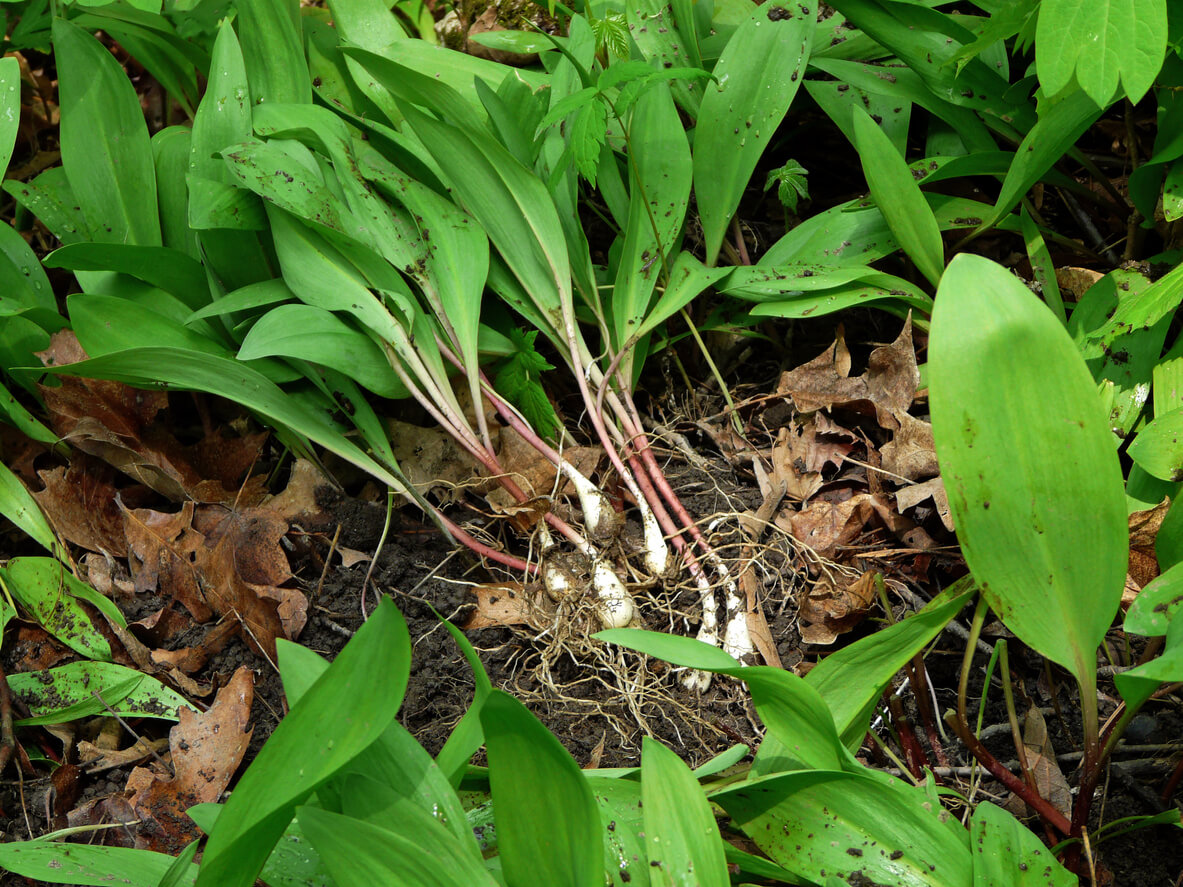
8. Ramps / Wild Leeks
Ramps are the ultimate spring delicacy, and I planted a whole flock of them a couple of years ago, rather than foraging in the park across the street from me. Ramps are part of the Allium family, and they grow easily east of the Mississippi. Most people pick them in the wild, but you can grow your own in any shady border with moist loam soil, or under trees. Hardy to Zone 4 and edible both in leaves and bulbs, this onion relative is sure to become a favorite in your kitchen. You can substitute any recipe calling for scallions or leeks with ramps!
Perennial edibles can provide a great foundation for your garden and will serve as the backbone of your edible landscape for years to come. With their long-term presence in the garden, perennials can offer food security and help you create an edible landscape that produces something year round!
Which edible perennial plants do you grow?


 Previous
Previous


I would like to grow ramps. Where can I get seed or starts?
You can purchase ramp bulbs online from a number of small farms across the country. Try Gates Hill Farm or Sustainable Sorcerers.
Resubmitting name as I had it wrong originally. Sorry.
We live in an apartment complex, so I have only tried Chives, due to space confinement. They grow very well. I would like to try some other herbs to see how they do.
I grew up on a small farm and we had lots of space for herbs and vegetables, so naturally I miss this.
We now live in Langley, BC